MP Board Solutions Class 9 Science Chapter 10 – Work and Energy
MP Board Solutions for Class 9 Science Chapter 10 – Work and Energy are essential for understanding key Physics concepts in the MPBSE curriculum. These well-structured answers help students grasp topics like the concept of work, types of energy, power, and the law of conservation of energy. Designed as per the latest syllabus, these solutions strengthen conceptual clarity and improve exam preparation. Ideal for revision and practice, they encourage logical thinking and scientific understanding, making them a valuable study tool for scoring well in Class 9 Science exams.
MP Board Solutions Class 9 Science – Work and Energy – Exercise Images
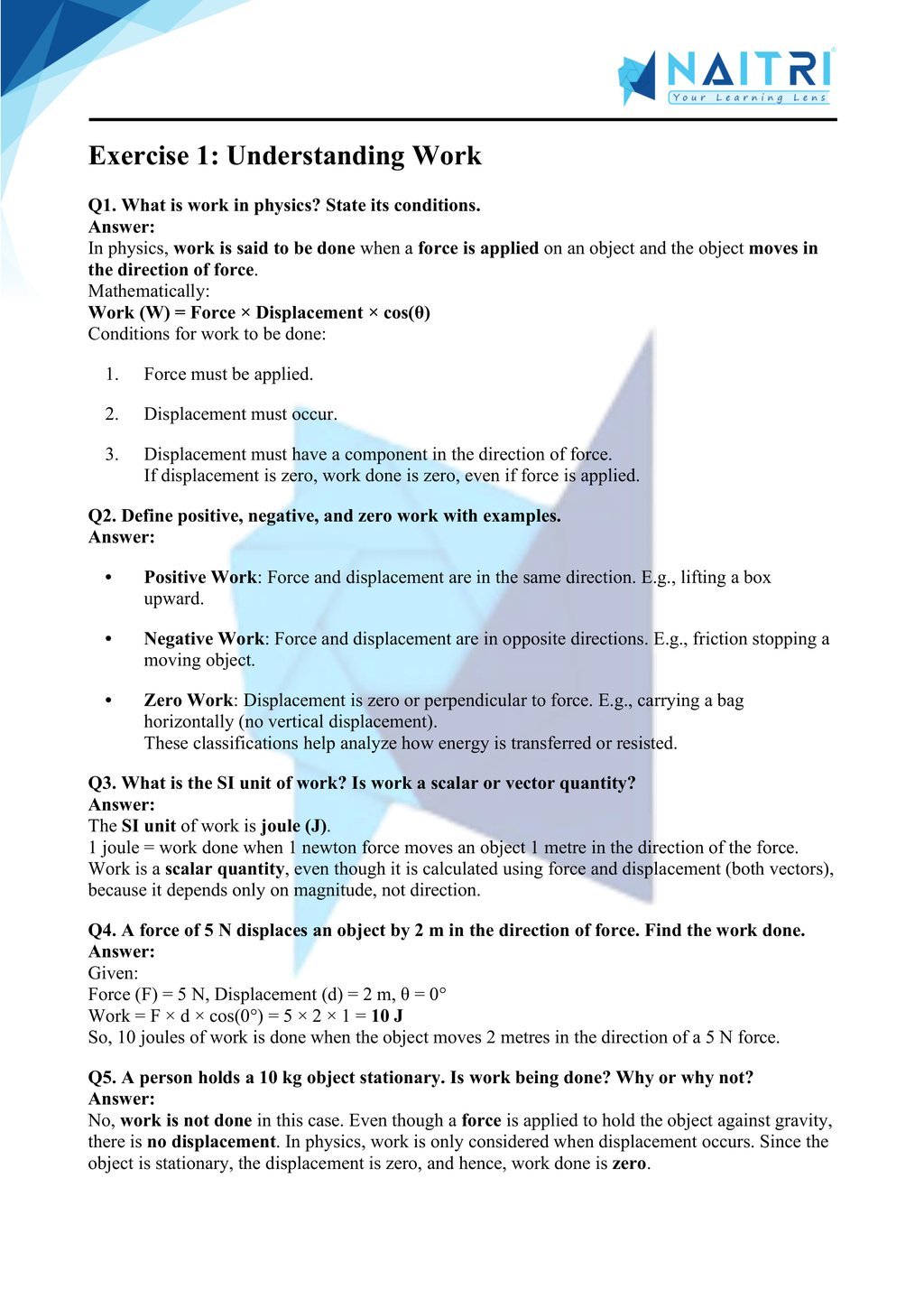
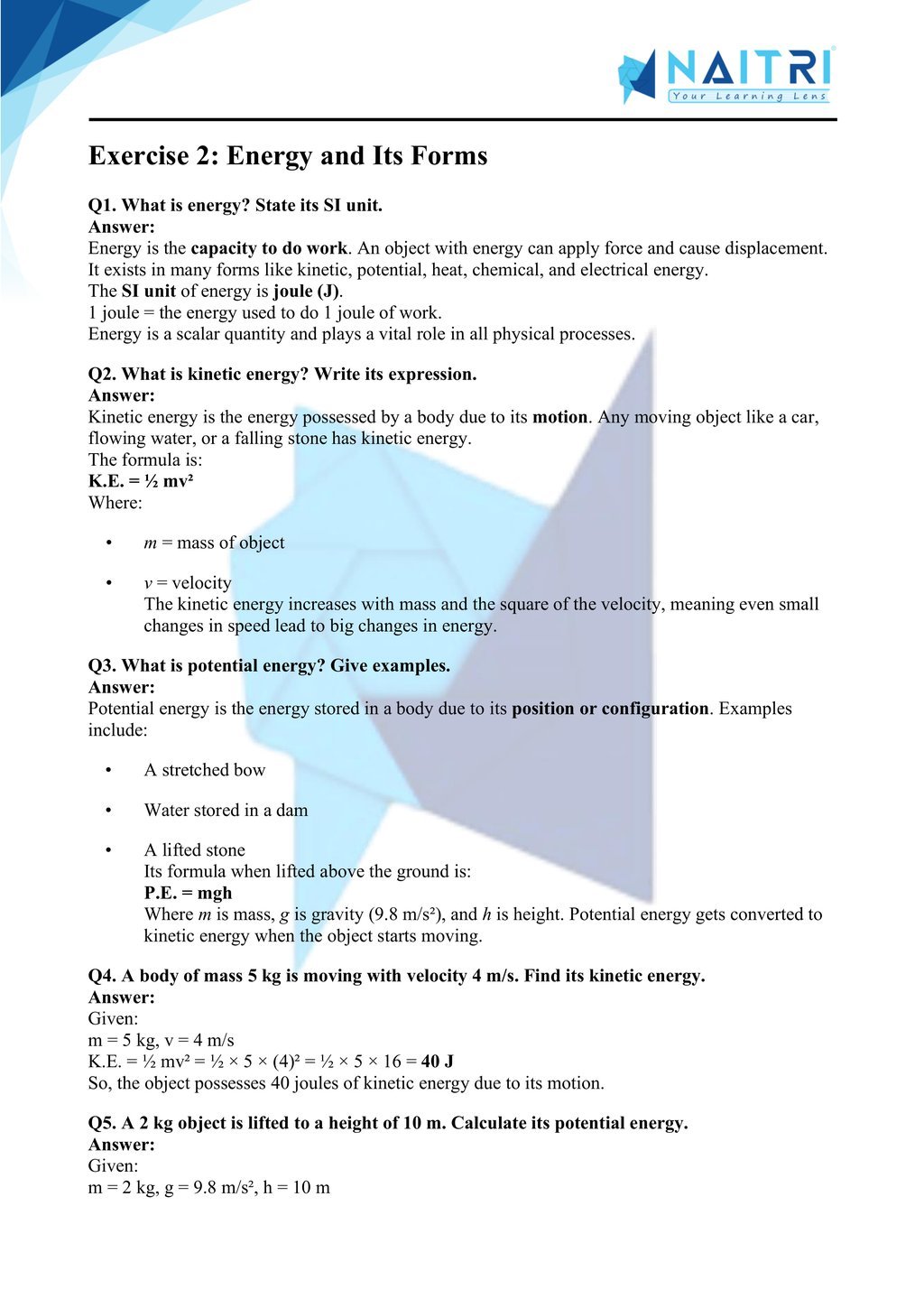
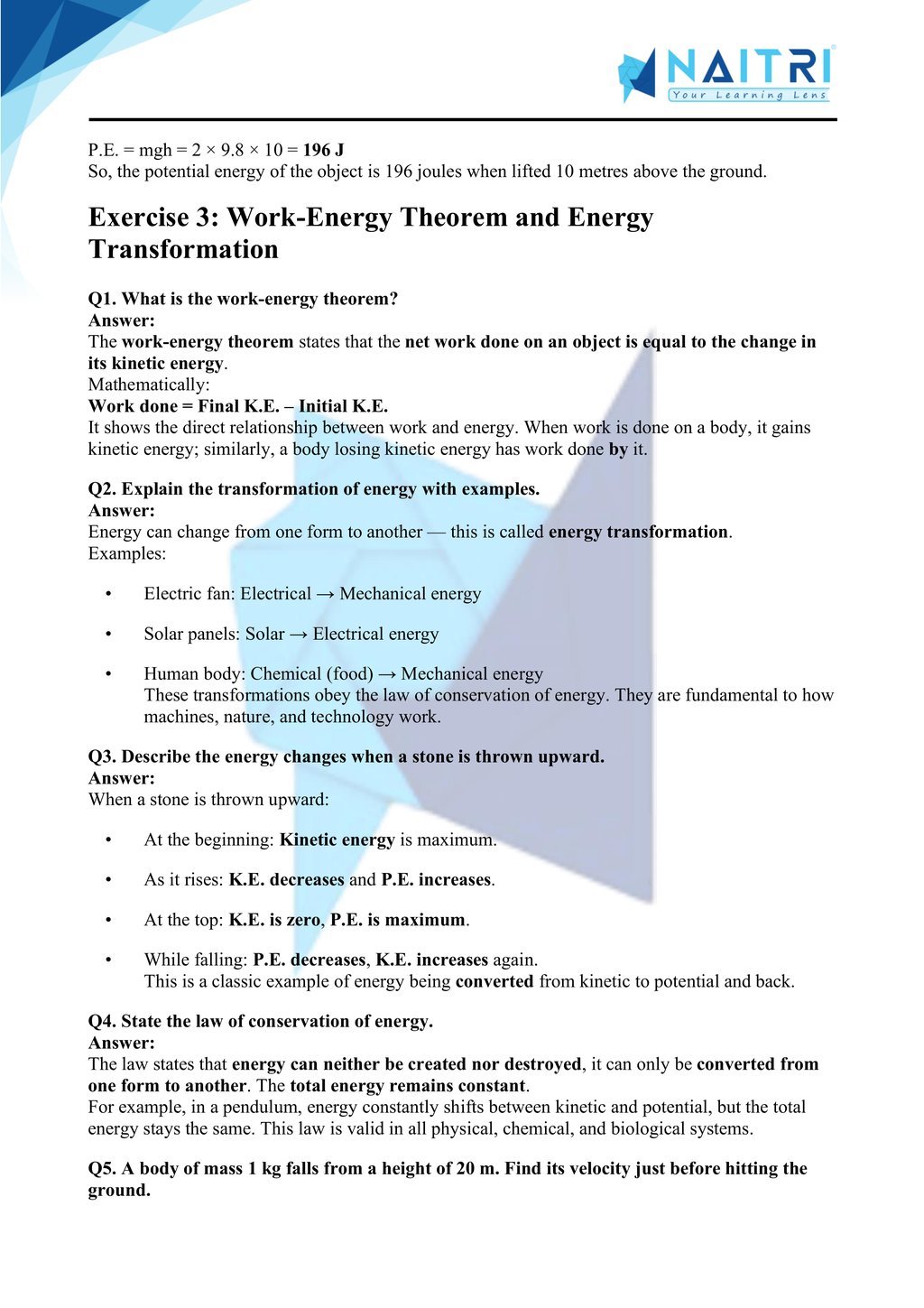
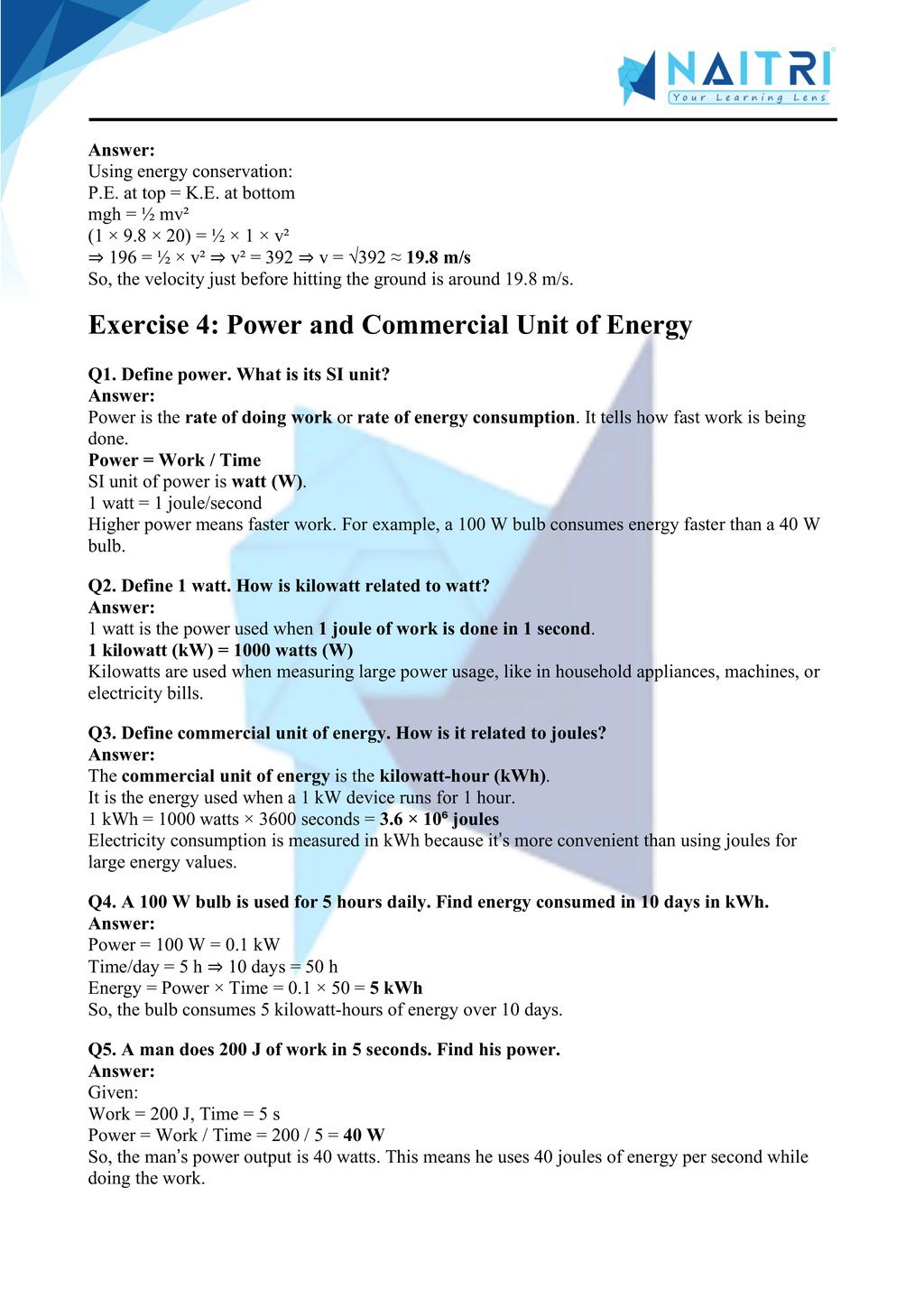
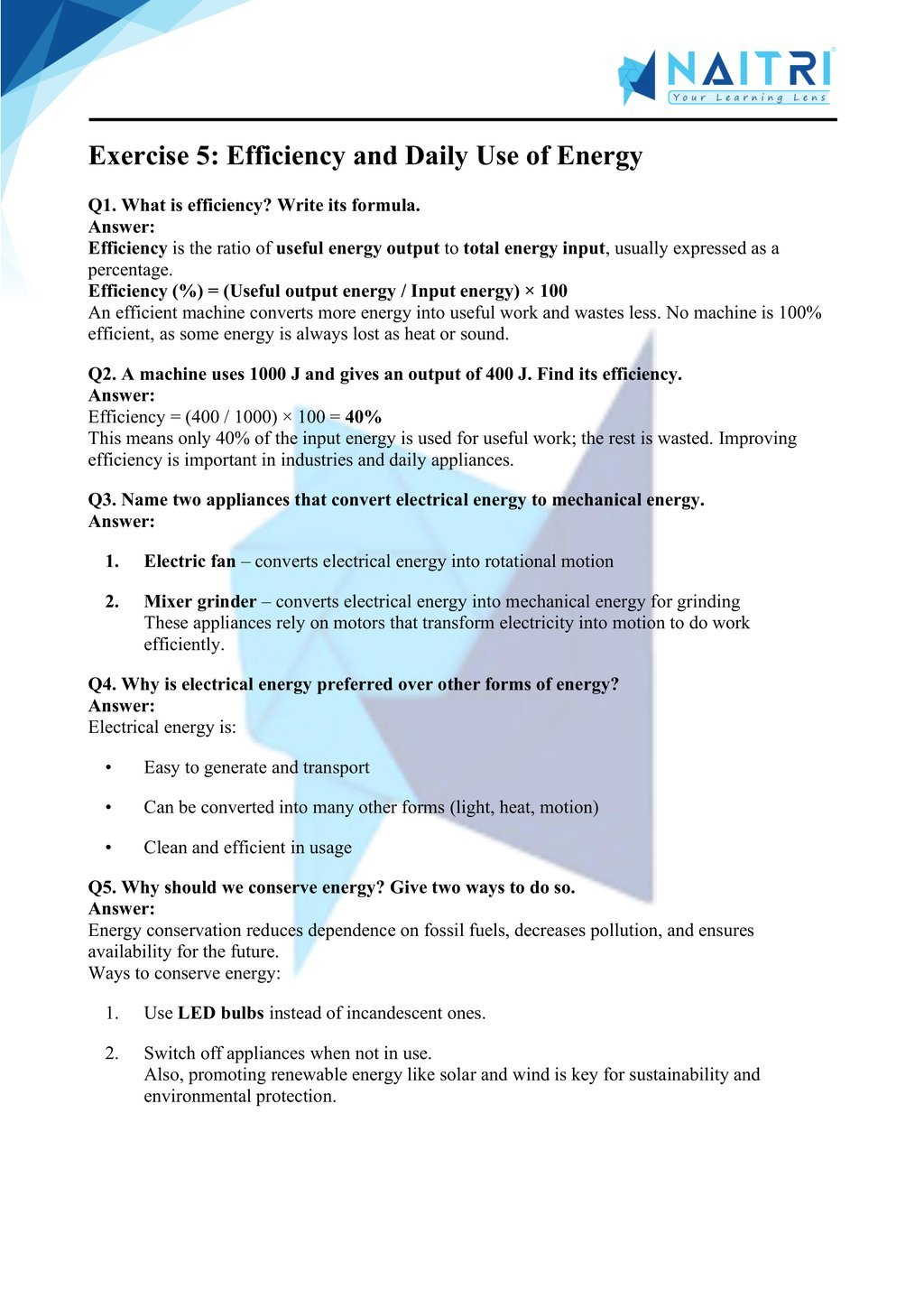
Experience Science Like Never Before – With AR!
Understanding Work and Energy is now more exciting and immersive! With the NAITRI App, you can explore complex science concepts through Augmented Reality (AR). Watch energy transform, machines operate, and forces do work — right in front of you. Our AR-powered lessons make learning interactive, 3D, and fun, helping you retain concepts better and enjoy every topic.



Visualize . Interact . Understand . The future of learning is here
Work and Energy – Important Questions with Answers
1. Define work in physics.
Answer: Work done when force causes displacement in its direction: W = F × s × cos θ.
2. SI unit of work.
Answer: Joule (J).
3. When is work said to be positive/negative/zero?
Answer: Positive: force and displacement same direction. Negative: opposite direction. Zero: perpendicular or no displacement.
4. Define 1 joule.
Answer: Work done by 1 N moving object 1 m in force direction.
5. Define power.
Answer: Rate of doing work; P = W/t.
6. SI unit of power.
Answer: Watt (W).
7. Define 1 watt.
Answer: 1 J work in 1 s.
8. What is commercial unit of energy?
Answer: kWh; 1 kWh = 3.6 × 10⁶ J.
9. Define energy.
Answer: Capacity to do work; forms: mechanical, thermal, etc.
10. Define kinetic energy.
Answer: Energy due to motion; KE = ½mv².
11. Define potential energy.
Answer: Energy due to position; PE = mgh.
12. KE of 2 kg mass at 3 m/s?
Answer: ½×2×9 = 9 J.
13. PE of 5 kg at 4 m height? (g = 10)
Answer: mgh = 200 J.
14. State law of conservation of energy.
Answer: Energy cannot be created or destroyed, only transformed.
15. Conditions for work done.
Answer: Force must act and displacement occur in force direction.
16. List various energy forms.
Answer: Mechanical, heat, chemical, electrical, nuclear, etc.
17. Define mechanical energy.
Answer: Sum of kinetic and potential energy.
18. Work vs energy vs power relation.
Answer: Work and energy both in joules; power = energy/time.
19. Find work done lifting 1 kg by 10 m. (g = 9.8)
Answer: W = mgh = 98 J.
20. Define average and instantaneous power.
Answer: Average: total work/total time. Instantaneous: work rate at a moment.
21. What is 1 kilowatt?
Answer: 1000 watts.
22. Energy consumed by 1 kW in 2 h?
Answer: 2 kWh.
23. Why do vehicles have gear systems?
Answer: To maintain optimal engine power and efficiency at different speeds.
24. Example of energy transformation.
Answer: Electric heater: electrical energy → heat energy.
25. Why is energy considered a conserved quantity?
Answer: Laws and observations show total energy before = total after transformation.
Work and Energy discusses the relationship between force and motion in doing work. Students explore different types of energy (kinetic, potential), power, and the principle of conservation of energy. Practical connections to pumps, motors, and electricity usage help link theory to real-life scenarios. This chapter supports energy literacy—essential for sustainable living and rural technology in MP.
Related Chapters You May Like
Download Naitri App
Easy, Visual Learning — Right on Your Phone
Learn with Augmented Reality! The Naitri app makes CBSE and MP Board concepts interactive and fun — even in low-resource settings. Watch lessons, complete homework, take tests, and track progress — all in one place. Anytime. Anywhere.
Available on








